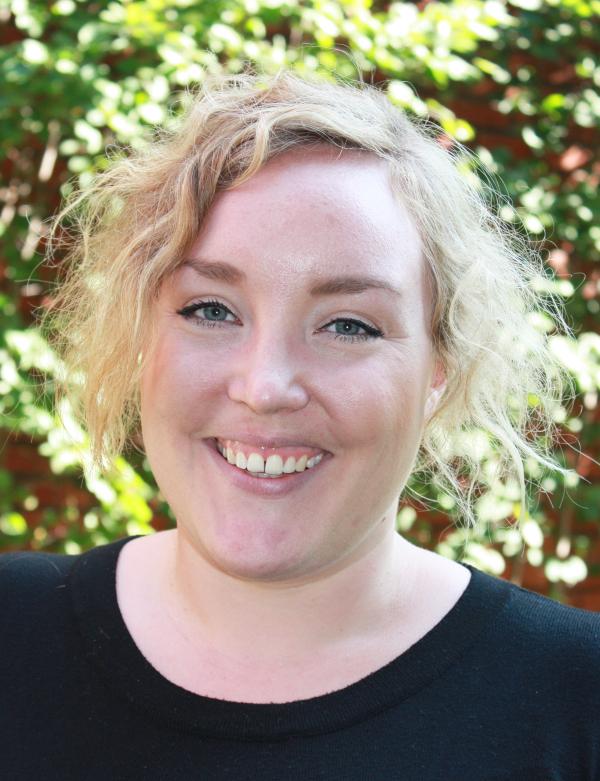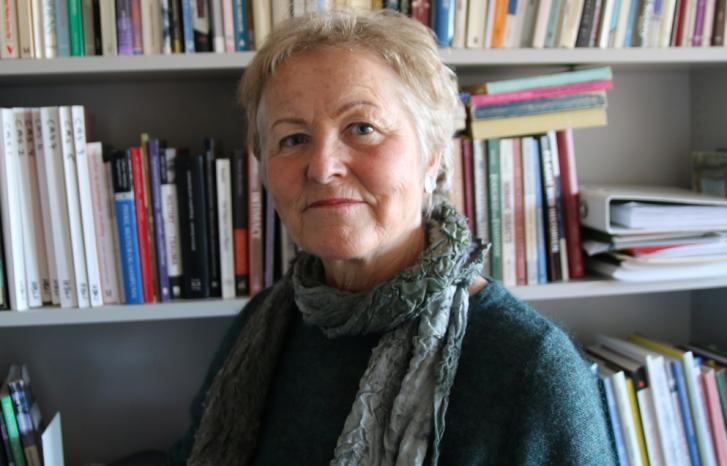Many people feared that women would stop having babies when they entered the labour market in the 1970s. And the Norwegian birth rates sank to an all-time-low in 1983. Surprisingly, the Norwegian figures then started to increase while the birth rates in many other European countries kept sinking.
What is so special about Scandinavia and Norway?
“It is commonly presumed that the high birth rates are a result of the welfare state and the way it facilitates for the parents. But until now we haven’t known exactly what it is with these welfare facilities that make us decide to have children,” says sociologist Eirin Pedersen. She recently finished her PhD thesis on why Norwegian men and women choose to have children.
“Based on my material, I’d say the whole package is of importance. This consists of both welfare facilities and an expectation that women should work. The fact that much of the childcare takes place outside the home makes it easier for women with paid jobs to have more children than in cases where childcare must be arranged privately.”
This is, however, not only an economical and practical issue.
“The welfare state has an impact on our culture. A German colleague pointed out the following to me: in Scandinavia, it is hard to imagine the possibility of living The Good Life without children. This is not necessarily the case in the rest of Europe.”
Everybody wanted children
While a lot of research on fertility is based on statistics, Pedersen had access to extensive interview material. She was connected to a research project in which 90 women and men from the age of 25 to 35 were interviewed about their thoughts on having children.
The informants belonged to the upper middle class and the working class. Some of them already had children while others did not.
“It is evident from our material that in Norway The Good Life is a life with children. We had an interview questionnaire for those who didn’t want children, but we never used it. All the informants imagined that they would have children some time in the future,” says Pedersen.
Great faith in the welfare system
The Norwegian equality project appears to have great support among the informants, both those belonging to the middle and the working class. Most families have huge mortgages and are dependent on two incomes.
“Norwegian men and women put great faith in the welfare state and trust that it will facilitate economically when they have children. But they know surprisingly little about the rules,” says Pedersen.
“Future parents rarely check the NAV (Norwegian Labour and Welfare Administration) rules before they become pregnant. They put their complete trust in the welfare system, and many are surprised to find out that they only get 80 per cent of their salary if they take 12 months of parental leave.”
Because of their trust in full kindergarten coverage, some parents don’t realise that they may have to wait up to a year before they get a place in kindergarten if the child is born at the “wrong” time of the year.
While all children will get a place in a kindergarden eventually, the official guarantee for this place only counts for children born before September 1st, for the following year. This is an issue that is politically debated.
“When making plans for the future, the soon-to-be parents think that everything will just sort itself out. They lack a financial buffer when they don’t get a place in kindergarten and their only option is that one of the parents stays at home an extra few months,” says Pedersen.
See also: Immigrants embrace the Norwegian father's quota
Individual, yet exactly the same
At what stage in life is it convenient to have your first child? Men and women belonging to the working class thought between the age of 25 and 30 was a good time, whereas those belonging to the upper middle class thought between the age of 30 and 35 was better.
“All the informants emphasised that they were talking solely about themselves, and that it varies a lot when people are ready for children. Nevertheless, all the responses lie within these narrow frames,” says the researcher.

When asked about their views concerning an upper age limit, however, many of the informants were willing to offer their opinions of other people. Those belonging to the working class were particularly negative towards people who became parents late in life.
“They were critical towards “all these old dads”, where old in these cases may refer to men of forty. They emphasised the importance of being able to actively follow up your children, and that this is much easier for younger parents. This was one of the reasons why they regarded 30 as an upper age limit for having children.”
On the other hand, some of the informants who became parents at a relatively young age – before they turned 25 – experienced that others considered them irresponsible.
“This implicates that even those who disagree are influenced by middle class standards. Even though they don’t agree with the standard, they realise that many do not approve of their choices. I interpret the working class’ criticism of older parents as a sort of counterpower,” says Pedersen.
The informants from the middle class defended their choice of having children at an older age by emphasising the importance of having a stable economy first.
Don't want to talk about financial costs
The Norwegian parents were not interested in talking about the financial costs of having children.
“The parent and child relationship stands as the purest and most stable relation there is. Money is not made out to be a decisive factor for choosing to have children. If we had posed the same question in the Netherlands, for instance, we would probably have been presented with a mathematic equation as a part of the decision whether to become pregnant or not. The fact that this doesn’t happen in Norway is a result of the contribution we receive from the welfare state,” according to Pedersen.
It is evident from the interviews, however, that people from the upper middle class and from the working class base their decisions on different financial concerns.
Women and men with higher education and well-paid jobs want everything to be in order before they have children. They want to own their home, preferably a house rather than an apartment. They want an economy stable enough to sustain their personal consumption. They often raise huge mortgages as a part of their family planning process. Furthermore, they want to have finished their education and preferably have a permanent job.
Money not important
Among the working class, however, it is not important whether you own or rent your house or apartment, and parents are more willing to renounce their personal consumption. Many of the informants emphasised that money had never been important to them. The working class are more dependent on parental leave pay and kindergarten due to their lack of a financial buffer.
“It is not uncommon to regard these contributions from the welfare state as measures initiated to accommodate the middle class lifestyle. If this is the case, however, then the working class has now embraced the same lifestyle. The working class mothers are equally happy that kindergarten enables them to go back to work when the parental leave is over,” says Pedersen.
The working class more flexible in terms of time
The working class parents are more flexible in terms of when it is considered convenient to have children, since they are less concerned that everything has to be in place first.
“The time span is limited for women who want to complete their higher education, work for a few years and have a stable economy before they have children. Biology, combined with these factors, reduces their possibilities of having children. Some of the oldest women we interviewed who did not yet have children were starting to realise that they didn’t have time to get as many children as they wanted.”
According to the researcher, it is important to understand that both groups are behaving economically rationally according to their life situation.
“If you’re an unskilled worker or have little education your income will most likely remain more or less the same over the next few years. Those with years of higher education, however, often find themselves in a different situation. Many have temporary positions for a while before they get a permanent job, and particularly women consider it important to establish a career before they enter a long period of parental leave.”
“Waiting may provide better financial security and stability for the families. The media focuses a lot on how women wait too long before they have children, but looking at people’s situation today it is easy to understand why they make these choices,” says the researcher.
Welfare measures changes parents’ everyday life
Welfare measures such as parental leave and kindergarten have influenced our views on what is considered to be good parenting in Norway.
“All the informants agreed that it is important to be at home during the child’s first year. And everybody agreed that it is good for the child to be in kindergarten when it is older,” says sociologist Eirin Pedersen.
The kindergarten’s opening hours and the child’s bedtime determine the scope of so-called “family time” after the child has started kindergarten. This is the precious time of the day between work and the child’s bedtime.
“This is the period when the whole family can spend time together, so both parents should preferably be at home. Here Norway differs from many other European countries where it is more common that parents alternate their time with the child in cases where both parents are working.”
See also: The solution is daddy
Evening shifts and part time jobs
In the interviews, the mothers in particular talked about family time, but the fathers also emphasised how important it was to be present in the afternoons. How this family time is attained depends on what kind of work you do.
Middle class parents often have jobs with flexible working hours, but with high performance requirements. It is no problem to leave work early to pick up the children in kindergarten, but you are expected to work in the lost hours in an “evening shift”. A lot of the fathers and some mothers log on to their work accounts when the children have been put to bed.
Working class jobs often have clearly defined working hours, and many work shifts. To be able to spend time at home in the afternoons, many of these parents changed jobs in order to avoid evening shifts. Furthermore, a lot of the mothers worked part time in order to make everything fall into place.
“We did not get the impression that the informants worked part time because they were longing back to a housewife ideal. They long for family time, which is particularly precious because the children spend so much time with other people than their family in kindergarten,” Pedersen concludes.
Translated by Cathinka Dahl Hambro.
Eirin Pedersen will defend her PhD thesis at the Department of Sociology and Human Geography at the University of Oslo on December 5th.
Pedersen has been connected to the research programme The social meaning of children, which has consisted of researchers from the University of Oslo and NTNU - the Norwegian University of Science and Technology.



